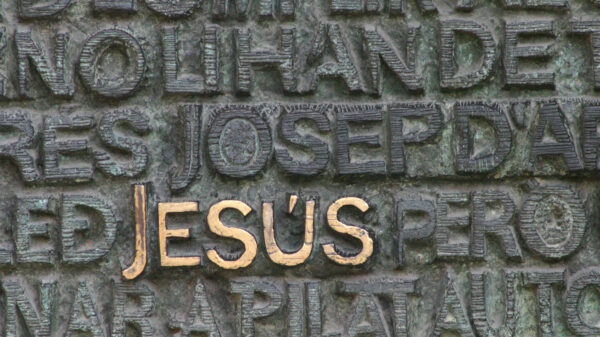The resurrection of Jesus after his crucifixion is the central doctrine of the Christian faith. The Apostle Paul, writing in 1 Corinthians 15:14, states, “If Christ has not been raised, then our preaching is in vain, your faith also is in vain.” If Jesus was resurrected, then his claims of divinity would be justified. As a result, a great deal of interest exists from both Christians and non-Christians alike.
When investigating the claims of Jesus’ resurrection, apologists Gary Habermas and Michael Licona suggests using their “minimal facts approach” (MFA), in which one considers data which is, 1) strongly evidenced, and 2) granted by virtually all scholars on the subject. [1] Habermas and Licona identify five facts which meet the criteria of the MFA: 1) Jesus died by crucifixion, 2) Jesus’ disciples believed that he rose and appeared to them, 3) the Church persecutor Paul was suddenly changed, 4) the skeptic James, brother of Jesus, was suddenly changed, and 5) Jesus’ tomb was empty. [2] Anyone making a claim about Jesus’ resurrection must account for these five facts.
Nineteenth-century theologian David Friedrich Strauss argued that the historical person Jesus had lived and died but that his resurrection was an imaginary vision. [3] Variations on this “hallucination theory” have been adopted by a range of scholars in the years since, including modern-New Testament scholar Bart Ehrman. [4] Under such a theory, those who claimed “eye-witness” status and said they saw the resurrected Jesus had, in reality, a subjective, internal experience that caused them to believe Jesus rose from the dead when in reality he had not.
The hallucination theory, if true, answers four out of the five data points identified by Habermas and Licona: it accepts that Jesus died of crucifixion, that Jesus’ disciples believed he rose as a result of hallucinations or other naturalistic explanations, and explains the changes of Paul and James as a result of these hallucinations. However, the hallucination theory cannot explain the empty tomb. Those who subscribe to this theory to explain away Jesus’ resurrection must adopt another theory to address the tomb. This is a significant problem, because if the disciples mistook a hallucination for the actual, risen Jesus, opponents of the early Christian movement could have produced Jesus’ body to counter their claims. For his part, Ehrman argues that the body could not have been produced because by the time the disciples began preaching Jesus’ resurrection the body would have already decomposed. [5] However, this line or argument fails as Jesus’ body would still have displayed distinguishing features (such as height, hair, wounds, etc) and been present in the widely-known tomb of Jesus. [6] As a result, the empty tomb continues to pose a problem for the hallucination theory.
Further, problems exist with the claims of hallucinations themselves. First, the disciples and others claimed to have seen Jesus in groups of different sizes, at different times, and in different locations. Modern psychology provides little evidence that groups can experience spontaneous, collective hallucinations. Medical sociologist Robert Bartholemew explains, “The likelihood of a shared social delusion… appears highly unlikely. Such cases are typically incubated in small, close-knit groups, over a long period of time.” [7] Paul and James do not fit this description, nor do the disciples in general. Not only were James and Paul not part of a “close knit” group which could encourage them to believe they had seen the risen Jesus (as both were non-believers and did not associate with Jesus’ disciples), but little time passed between Jesus’ death and the preaching of the disciples that he had been seen alive. If Peter, for example, had experienced a hallucination, it would still have required a lengthy amount of time before he could convince the others they also had experienced the risen Jesus. The early emergence of the teaching of the resurrection excludes mass hallucination from being considered as a satisfying explanation.
The explanatory power of the hallucination hypothesis pales in comparison to the tradition Christian position Share on XOther problems exist with the hallucination theory, including the fact that the Jewish followers of Jesus had no theological expectation that Jesus (or anyone else) should be resurrected. [8] The explanatory power of the hallucination hypothesis pales in comparison to the tradition Christian position: the five data points given by Habermas and Licona are best explained by the fact that Jesus was really resurrected from the dead.
[1] Gary R. Habermas and Michael R. Licona, The Case for the Resurrection of Jesus (Grand Rapids: Kregel Publications, Inc, 2004), 47.
[2] Habermas and Licona, The Case for the Resurrection of Jesus, 48-77. It should be noted, the fifth point, “the tomb was empty” does not meet the second criteria of the MFA. That Jesus’ tomb was empty is accepted by a majority of scholars (according to Habermas, about 75%), but not “virtually all.” Still, the claim is strongly evidenced and its wide scholarly acceptance makes the claim deserving of a response.
[3] David Friedrich Strauss, The Life of Jesus, Critically Examined (New York: Calvin Blanchard, 1860), 39-43, 87-91.
[4] Inspiring Philosophy, “4. The Resurrection of Jesus (Advanced Theories),” Video, March 4, 2016, 17:48, https://youtu.be/UWbShiINl4s.
[5] Inspiring Philosophy, “4. The Resurrection of Jesus (Advanced Theories).”
[6] Paul Copan and Ronald K. Tacelli, Jesus’ Resurrection: Fact or Figment? (Downers Grove: InterVarsity Press, 2000), 153. See also, Habermas and Licona, The Case for the Resurrection of Jesus, 70-71.
[7] Robert Bartholemew, “The Bizarre Outbreak of Hallucinations in Oregon,” Psychology Today, last modified October 19, 2016. https://www.psychologytoday.com/us/blog/its-catching/201610/the-bizarre-outbreak-hallucinations-in-oregon.
[8] Gary R. Habermas, “Explaining Away Jesus’ Resurrection: The Recent Revival of Hallucination Theories,” Christian Research Journal, vol. 23, no. 4, https://www.garyhabermas.com/articles/crj_explainingaway/crj_explainingaway.htm.
Jimmy Wallace is a detective who holds a BA in Psychology (from UCLA) and an MA in Theology - Applied Apologetics (from Colorado Christian University).








































